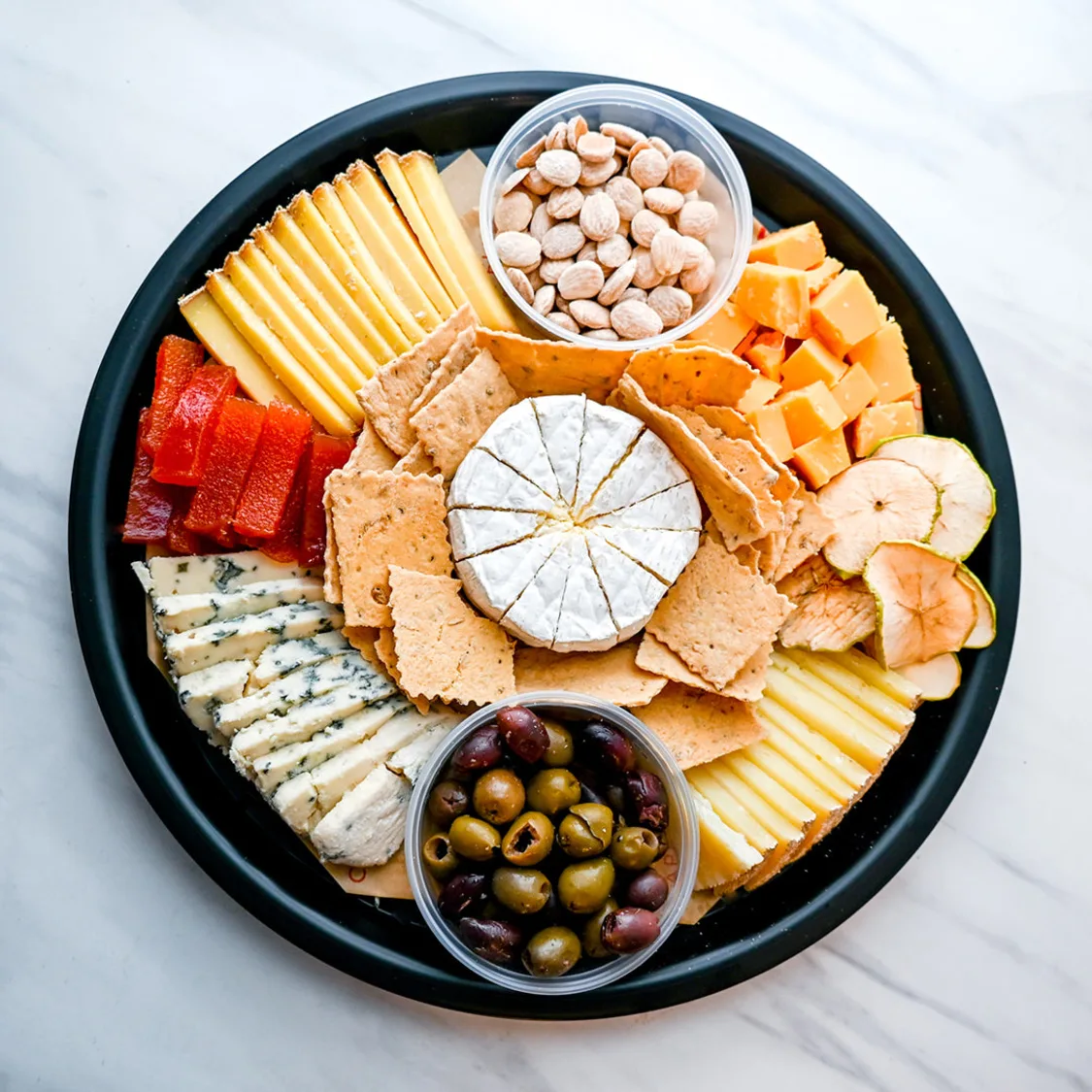
Cheese Plate
An assortment of artisanal French cheeses, often served as a course or appetizer.
Ingredients
- •Brie
- •Camembert
- •Roquefort
- •Comté
- •Grapes
- •Nuts
- •Bread
Instructions
Select Cheeses
Choose a variety of French cheeses, such as Brie, Camembert, Roquefort, and Comté.
Arrange the Plate
Beautifully arrange the cheese wedges on a plate, accompanied by grapes, nuts, and crusty bread.
Serve and Enjoy
Allow the cheeses to come to room temperature before serving, then encourage guests to savor the flavors.
A cheese plate, or "plateau de fromages," is a quintessential part of French dining culture. It typically features an assortment of artisanal French cheeses, each with its own unique flavor and texture. This dish is often served as a course in a multi-course meal or as an appetizer, allowing diners to savor the rich and diverse cheese offerings of France.
The tradition of serving a cheese plate dates back centuries in France, where cheese-making is considered an art form. Each region of France is known for its specific types of cheese, such as Brie from Île-de-France, Camembert from Normandy, Roquefort from the south, and Comté from the Jura mountains. This variety reflects the country's rich agricultural heritage and the skill of its cheesemakers.
To create a cheese plate, start by selecting a variety of cheeses that offer a range of flavors and textures. Common choices include soft and creamy Brie, pungent and blue-veined Roquefort, firm and nutty Comté, and the earthy and aromatic Camembert. Arrange the cheese wedges beautifully on a plate, accompanied by fresh grapes, crunchy nuts, and slices of crusty bread.
Customizations for a cheese plate are endless. You can add other accompaniments such as dried fruits, honey, or charcuterie to enhance the flavors of the cheeses. Some people also like to include a selection of crackers or breadsticks for added crunch.
In France, a cheese plate is typically served at room temperature to allow the flavors to fully develop. It is often enjoyed with a glass of wine, with the type of wine chosen to complement the cheeses. For example, a robust red wine pairs well with strong cheeses like Roquefort, while a crisp white wine is a good match for milder cheeses like Brie.
While a cheese plate is a delightful and indulgent treat, it is important to enjoy it in moderation. Cheese can be high in calories and fat, so it is best to balance it with lighter dishes in your meal. Additionally, some cheeses may contain lactose, which can be a concern for those with lactose intolerance. However, cheese also provides valuable nutrients such as calcium and protein, making it a nutritious addition to your diet when enjoyed in moderation.
